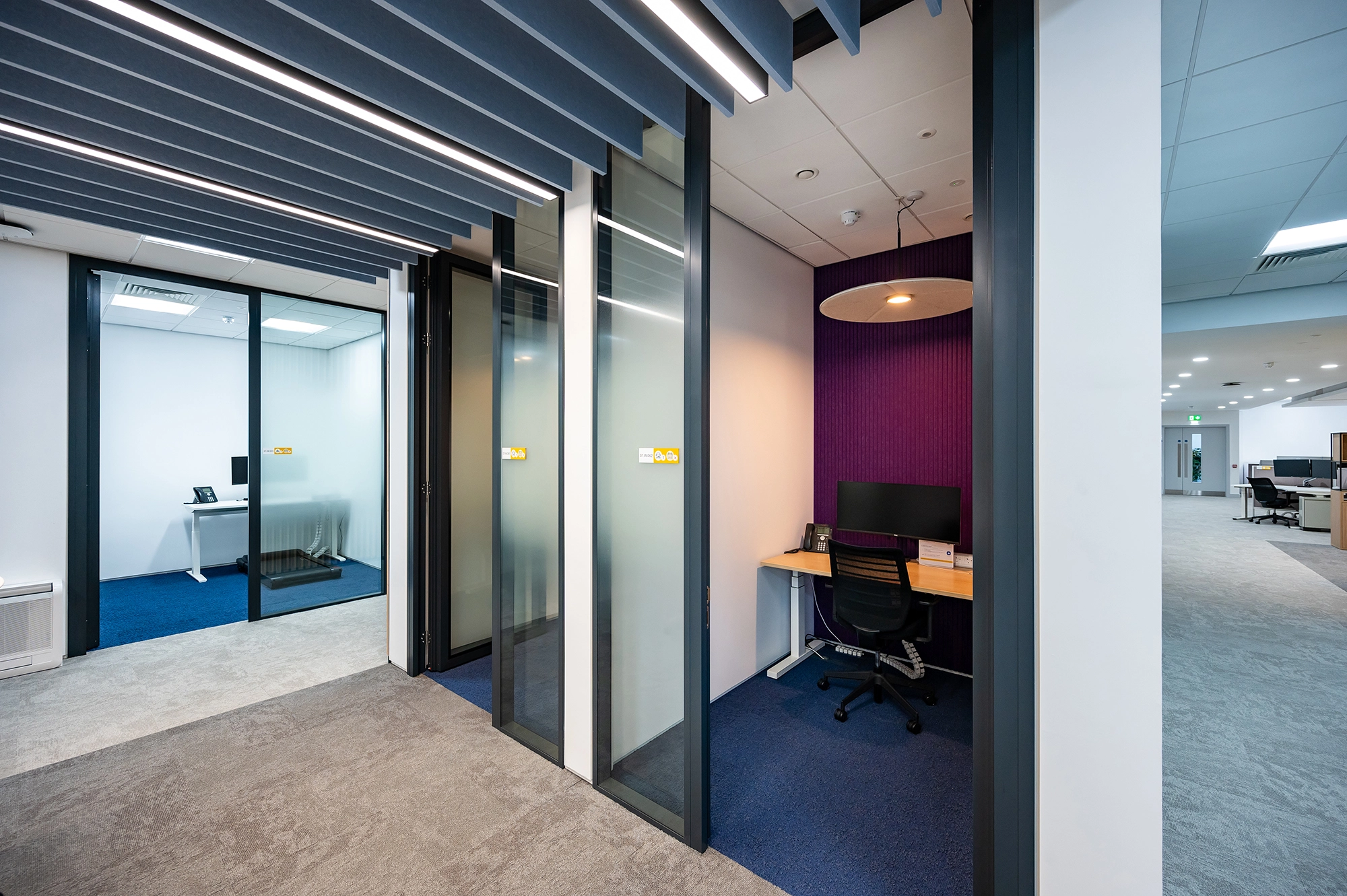5 Office Interior Design Trends for 2025
The way we work is constantly evolving, and office designs are shifting to match these changes. From incorporating nature to embracing collaborative spaces, here are five trends that we predict will dominate office interiors in 2025:
1. Biophilic Design: Bringing Nature Indoors
In 2025, biophilic design continues to lead the way in creating harmonious and productive work environments. This is almost a classic trend at this point, but simply it involves integrating natural elements into office spaces to foster well-being and reduce stress. Think living walls adorned with lush greenery, indoor gardens, or the use of natural materials like wood and stone. Beyond aesthetics, biophilic design offers measurable benefits: studies have shown it can boost productivity and creativity by up to 15% while reducing absenteeism.
Maximising natural light is another key feature of this trend. Offices with large windows, skylights, and open layouts help reduce eyestrain and create an uplifting atmosphere. The addition of green roofs or outdoor terraces provides employees with restorative spaces to recharge. For companies, investing in biophilic elements reflects a commitment to sustainability and employee well-being... a win-win for attracting talent and improving workplace morale.

2. Task-Based Zones
One-size-fits-all office layouts are out, and flexible, task-oriented spaces are in. Modern workplaces are being divided into zones tailored to specific activities. Distraction-free areas cater to deep focus, while collaborative zones encourage teamwork and innovation. There are also relaxation spaces for unwinding and private booths for confidential calls or virtual meetings.
This approach merges the versatility of open-plan designs with the functionality of private offices, offering employees the freedom to choose the environment that best suits their tasks. For instance, acoustic panels and moveable walls are often used to create adaptable spaces that can transition from team huddles to quiet work sessions. Task-based zones not only enhance productivity but also show an understanding of diverse working styles within a team.

3. Hybrid-Friendly Spaces
With hybrid work becoming the norm, offices are evolving to support a mix of in-person and remote collaboration. Hybrid-friendly spaces feature dedicated “Zoom rooms” equipped with professional lighting, soundproofing, and integrated technology for seamless virtual meetings. These areas ensure that remote workers feel equally included during discussions.
To cater to hybrid workers who split time between home and office, companies are creating adaptable desks, branded backdrops for video calls, and communal spaces that inspire collaboration. Sliding glass doors, sound-absorbing materials, and ergonomic furniture make these spaces versatile and welcoming. By prioritising hybrid-friendly designs, organisations encourage employees to view the office as a valuable and enjoyable part of their workweek.

4. Sustainability as a Priority
Sustainability is no longer optional; it’s a must-have for modern workplaces. Offices are incorporating recycled, renewable, and eco-friendly materials into their interiors, from rPET fabrics to renewable metals and wood furniture. Energy efficiency is also at the forefront, with smart technology controlling lighting, heating, and cooling based on occupancy.
Daylight optimisation through strategic layouts reduces energy use while enhancing employee well-being. Additional features like water refill stations, electric vehicle charging points, and bike racks demonstrate a company’s commitment to environmental stewardship. Beyond the physical office, organisations embracing sustainability are also strengthening their brand image and attracting environmentally conscious talent.

5. Inclusive & Ergonomic Designs
Inclusive office design ensures that workplaces are accessible and welcoming for everyone. From gender-neutral bathrooms to prayer and meditation rooms, these thoughtful features cater to diverse employee needs. Legal requirements are now being complemented by voluntary efforts to create inclusive environments, such as providing lactation rooms for nursing mothers or quiet spaces for neurodiverse individuals.
Ergonomics also takes centre stage in 2025. Adjustable desks, treadmill workstations, and ball chairs help employees stay active and comfortable throughout the day. Promoting movement and varied postures reduces the risk of repetitive strain injuries and fosters a healthier, more engaged workforce. Companies investing in these designs demonstrate a deep understanding of employee needs, boosting both morale and retention rates.
These trends reflect the changing priorities of the modern workplace, where functionality, inclusivity, and sustainability are key. Whether you're planning a major office overhaul or looking to incorporate small updates, these ideas can help create spaces where employees thrive. Which trend speaks to you the most? Let us know your thoughts!


